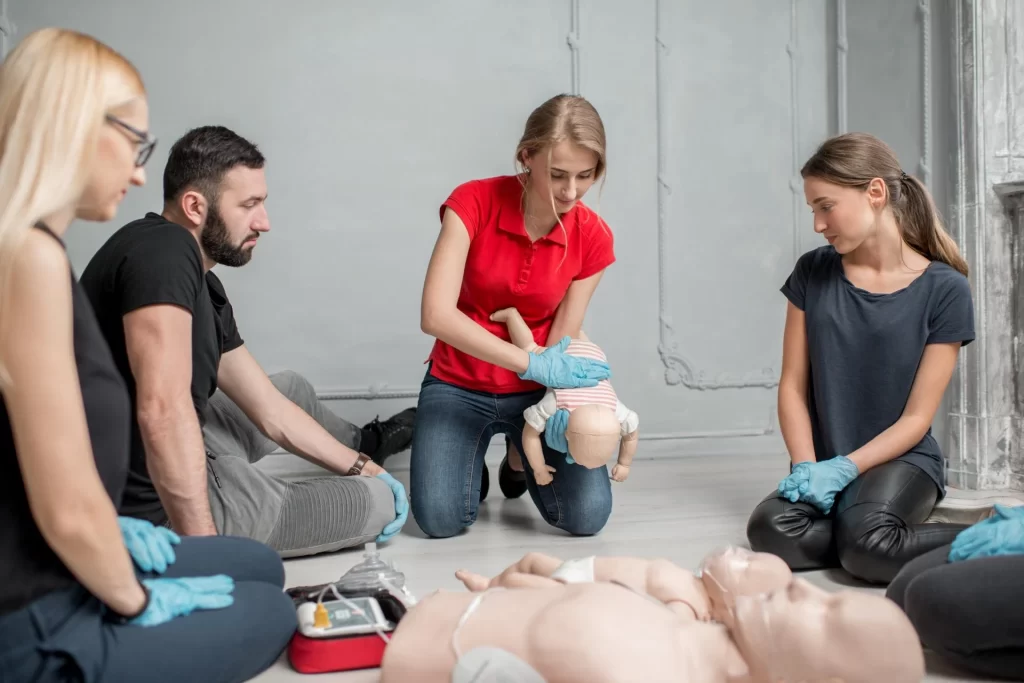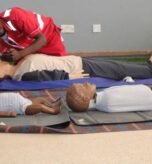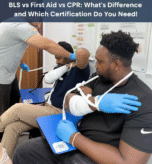In emergency medical practice, the appropriate and timely response is the most important. Medical professionals are usually mandated to keep their certifications up to date in life support courses so that they may handle emergencies and other life-threatening conditions. Basic Life Support (BLS), Advanced Cardiovascular Life Support (ACLS), and Pediatric Advanced Life Support (PALS) are essential. Understanding what is the purpose of BLS ACLS PALS course is important for healthcare professionals and individuals who want to work in the healthcare industry.

What Is the Purpose of BLS, ACLS, PALS Courses?
Basic Life Support (BLS)
BLS is the cornerstone of emergency life-saving measures in patients with cardiac arrest, respiratory disease, or airway obstruction. It is intended for healthcare providers and includes:
- High-quality chest compressions
- Use of automated external defibrillators (AEDs)
- Ventilation techniques
- Relief of choking in unresponsive and responsive patients
BLS is usually the gateway to all medical care providers and remains most important in all medical facilities.
Advanced Cardiovascular Life Support (ACLS)
ACLS continues to emphasize the more clinical interventions that go beyond BLS fundamentals. ACLS is intended for health care providers responsible for the immediate management of cardiopulmonary arrest or another related cardiopulmonary arrest disease. The course includes:
- Advanced airway management
- ECG rhythm identification and pharmacology
- Care of cardiac and respiratory arrest
- Notification of a resuscitation team
ACLS certification is mandatory for providers who practice in emergency departments, ICUs, or high-acuity facilities.
Pediatric Advanced Life Support (PALS)
PALS addresses the urgent treatment of children and infants. Pediatric patients exhibit heterogeneous physiological needs, and PALS trains providers to manage such issues effectively. The salient features are:
- Pediatric systematic assessment
- Recognition of respiratory and cardiac emergencies
- Pediatric fluid therapy and pharmacology
- Team pediatric resuscitation
PALS certification is suitable for child care workers, emergency care workers, and pediatric nurses.
Difference Between BLS, ACLS, and PALS
Knowing the difference between BLS, ACLS, and PALS is useful so that one can select the proper course depending on one’s work environment and career path
Aspect | BLS | ACLS | PALS |
Target Audience | All health professionals | Adult-emphasized emergency care workers | Pediatric-emphasized emergency care workers |
Primary Focus | Basic emergency care | Advanced adult cardiovascular care | Advanced pediatric life support |
Skills Taught | CPR, AED, ventilation | ECG, advanced airway, medication, team | Pediatric resuscitation, medication, IV access |
Common Work Environment | General hospitals, clinics | Emergency, ICU, and surgery departments | Pediatric hospitals, emergency departments |
Pre-requisite | None | BLS certification is recommended | BLS certification is recommended |
When Do You Need BLS, ACLS, or PALS?
It depends on your role and the type of patients you work with.
BLS: Mandatory for all healthcare professionals. It’s the most basic yet most frequently requested certification.
ACLS: Needed if you work in critical care units, emergency rooms, cardiac care units, or with at-risk adults.
PALS: Needed for staff working in pediatric wards, children’s emergency rooms, or urgent care for infants and children.
These certificates are commonly needed by employers hiring or being hired into certain positions.
Certification and Training Options
For those seeking career progression, taking up a good bls training in dubai, acls certification, or pals certification course can be a turning point in your career. These certifications not only enhance your skills in emergency response but also elevate your professional profile
When choosing a training organization, make sure that it provides:
- Practical, hands-on simulation
- Flexible scheduling (weekend or evening schedules)
- Valid certification with renewal notifications
Each certification has a typical period of two years, and a renewal course is then suggested so that you are updated with changing medical standards.

Conclusion
No matter if you are beginning your medical career or if you want to specialize in emergency care, knowing what is the use of BLS ACLS PALS course is critical. These are not mere credentials—these are lifelines for patients with life-and-death conditions. By understanding the difference between BLS, ACLS, and PALS, and understanding when do you need BLS, ACLS, or PALS, healthcare professionals can make educated decisions that directly affect their competence and the success of the patients they treat.
If you’re interested in taking acls certification, pals certification, or bls training in dubai, you’re already on the right track to becoming a more competent and confident provider



